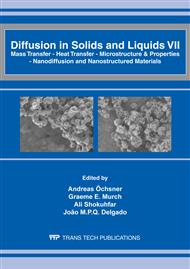p.612
p.620
p.626
p.632
p.641
p.647
p.654
p.662
p.668
Exergetic Analyses of a Particular Absorption Cooling System
Abstract:
The objective of this work is to present an exergy analysis of a novel absorption configuration using water-ammonia as working fluid. The proposed configuration operates at three pressure levels. The absorber is at an intermediate pressure (Pint). A thermodynamic model based on the mass energy and exergy balances is developed for this purpose. The parameters analyzed are the refrigeration systems performance (COP), the exergy efficiency, the global exergy destruction in the system, the exergy destruction and the irreversibility in different components. The effects of generator, absorber, condenser and evaporator on the performance of the system are examined. Numerical results highlight the great importance of the intermediate pressure on the performance of the system and specially on reducing the operating generator temperature. Consequently, the intermediate pressure is directly responsible on the adaptability of the proposed cooling absorption cycle to low enthalpy sources.
Info:
Periodical:
Pages:
641-646
Citation:
Online since:
April 2012
Authors:
Keywords:
Price:
Сopyright:
© 2012 Trans Tech Publications Ltd. All Rights Reserved
Share:
Citation:


